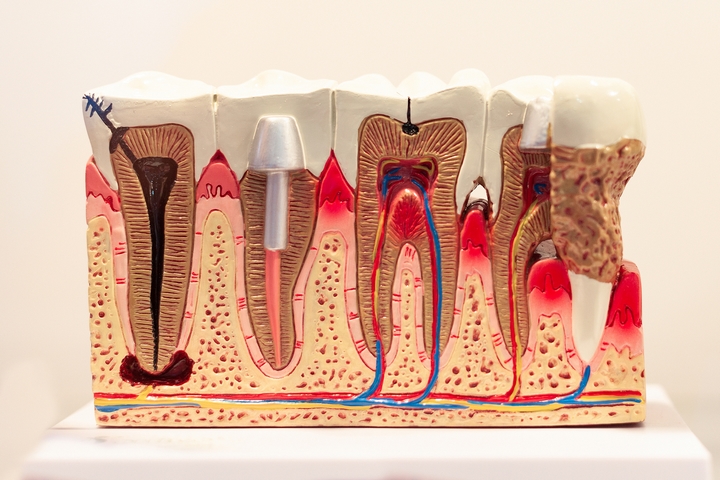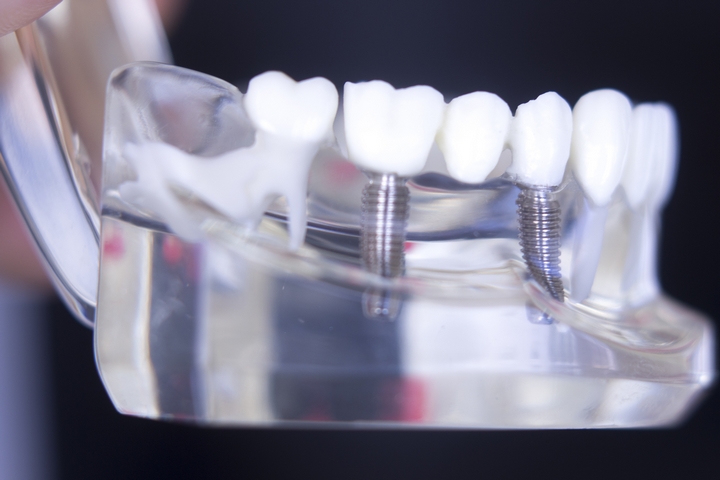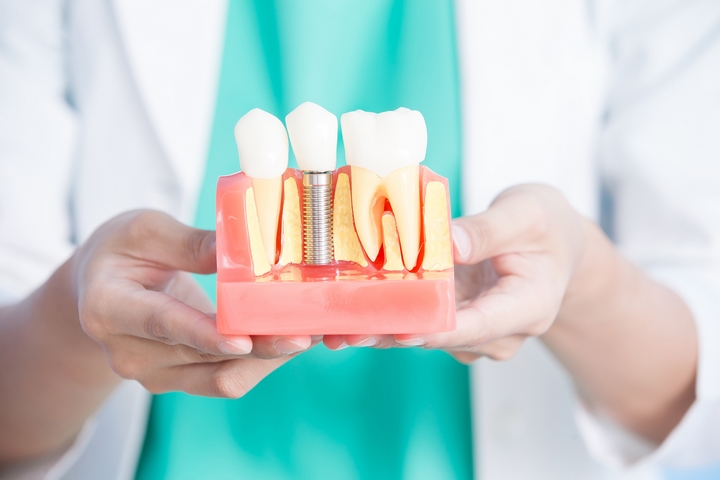Invented in the 1950s by a Swedish orthopedic surgeon named Per-Ingvar Branemark, teeth implants are now among the most preferred procedures for the prosthetic replacement of missing teeth. A dental implant is a surgical procedure that involves the placement of an artificial tooth root into the jawbone.
The artificial tooth root acts as an anchor for the crown. Depending on your particular needs, there are various teeth implant options you can choose from. If you’re not sure which among the following is the most suitable for you, consult your dentist for a diagnosis.
The health of your jawbone and your budget determines the type of dental implant you should get. The dental implant types above provide you with a good base to make an initial selection.
Below are the seven types of teeth implants and their different procedures:
Type #1: Endosteal Implants
 This is one of the most common types of teeth implants. It can be used for most patients and provides a long-term solution to missing teeth compared to removable dentures. However, one requires a healthy jawbone to achieve the desired results.
This is one of the most common types of teeth implants. It can be used for most patients and provides a long-term solution to missing teeth compared to removable dentures. However, one requires a healthy jawbone to achieve the desired results.
Endosteal implants are installed in a two-stage procedure. The implants, which are typically shaped like small screws and are made of titanium, are first embedded into the jawbone. Different types of screws, from rough threaded or bladed types to smooth cylindrical types, are used.
Once the implants have fused with the jawbone and the surrounding gum tissue has healed, usually, after several months, a second surgery is performed to attach the abutment and crown.
Type #2: Subperiosteal Implants
 If you are not comfortable with the idea of having an implant placed in your jawbone, this is the perfect dental implant option for you. It’s also ideal for patients without healthy natural jawbones and those who have not undergone bone augmentation procedures to strengthen their jawbones. It can also be used for those with jawbones that lack height.
If you are not comfortable with the idea of having an implant placed in your jawbone, this is the perfect dental implant option for you. It’s also ideal for patients without healthy natural jawbones and those who have not undergone bone augmentation procedures to strengthen their jawbones. It can also be used for those with jawbones that lack height.
Unlike the previous dental implant option, the subperiosteal implant procedure involves placing the implants on or above the jawbone but under the gum. Metal frames with attached poles are placed under the gum.
As soon as the gum around the frame heals, artificial teeth are secured to the poles. This is a great alternative to endosteal implants.
Type #3: Zygomatic Implants
 Due to the highly complex nature of this procedure, zygomatic implants tend to be less popular among patients. It should only be performed in cases where one lacks a healthy jawbone for an endosteal implant and where the subperiosteal implant option is not applicable.
Due to the highly complex nature of this procedure, zygomatic implants tend to be less popular among patients. It should only be performed in cases where one lacks a healthy jawbone for an endosteal implant and where the subperiosteal implant option is not applicable.
Type #4: Single Tooth Implants
 This type of tooth implant is similar to the endosteal implant. It refers to the basic dental implant procedure carried out to replace a missing tooth.
This type of tooth implant is similar to the endosteal implant. It refers to the basic dental implant procedure carried out to replace a missing tooth.
After going through this procedure, you end up with one implant, one abutment (the device that connects the artificial root to the crown) and one crown.
Type #5: Immediate Load Dental Implants
 Better known as same-day implants, immediate load dental implants allow you to have your dental implant surgery and tooth replacement done at the same time. If your jaw bone is in good condition and the implant has been well secured to support instant tooth placement, you can have your temporary tooth or teeth during a single appointment.
Better known as same-day implants, immediate load dental implants allow you to have your dental implant surgery and tooth replacement done at the same time. If your jaw bone is in good condition and the implant has been well secured to support instant tooth placement, you can have your temporary tooth or teeth during a single appointment.
Nonetheless, only eat and drink the recommended foods/drinks and avoid anything that may cause unnecessary pressure on the artificial teeth. Allow it enough time to heal.
Type #6: Mini Teeth Implants
 Teeth implants come in different sizes and lengths. The sizes, together with the patient’s teeth spacing and bone availability, determine where they will be placed in the mouth.
Teeth implants come in different sizes and lengths. The sizes, together with the patient’s teeth spacing and bone availability, determine where they will be placed in the mouth.
Mini teeth implants are a smaller version of the normal dental implants. They have a narrow diameter and are as small as a toothpick in terms of size. Mini teeth implants are mainly used to stabilize lower dentures and are placed using less-invasive surgical procedures.
The standard size for most teeth implants ranges from 3.5 mm to 4.2 mm in diameter. Such narrow and short implants are usually placed near the front area of the mouth. Wide sizes, on the other hand, usually have a diameter of 4.5 – 6 mm and are predominantly placed toward the back of the mouth.
To allow for a larger size or deficient bone density, mini or narrow body dental implants are used for patients with inadequate space between their tooth roots. They feature a diameter of between 2mm – 3.5mm.
Type #7: All on 4 Implants
 All on 4 is a dental implant technique used to replace multiple teeth, be it the entire top or bottom set. Ideally, one should use fewer implants to support as many teeth as possible.
All on 4 is a dental implant technique used to replace multiple teeth, be it the entire top or bottom set. Ideally, one should use fewer implants to support as many teeth as possible.
For instance, when replacing an entire top set of a patient’s teeth, about 4 implants may be placed in the available jawbone. Special types of abutments may also be used to facilitate the installation of the temporary replacement of teeth once the implants have successfully been rooted.
Wait for approximately 6 months to allow the tissues to heal. After this period, book an appointment with your dentist to get your permanent teeth placed.

